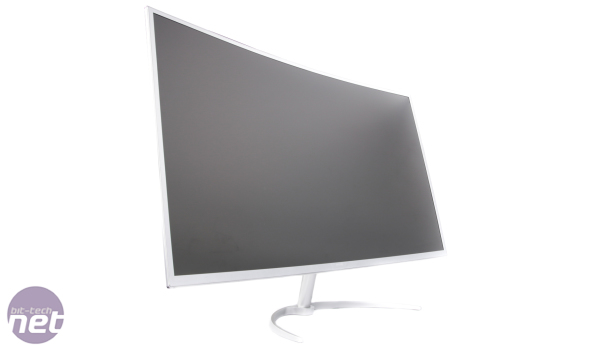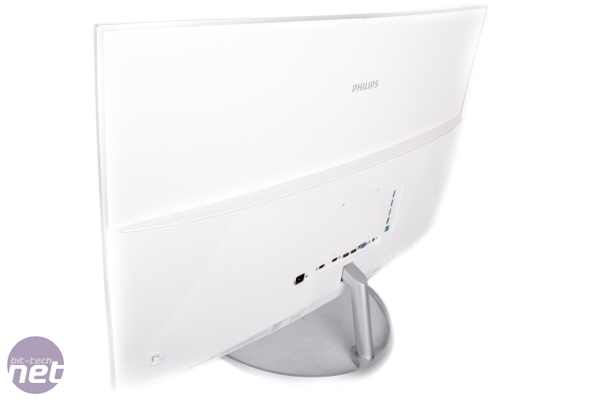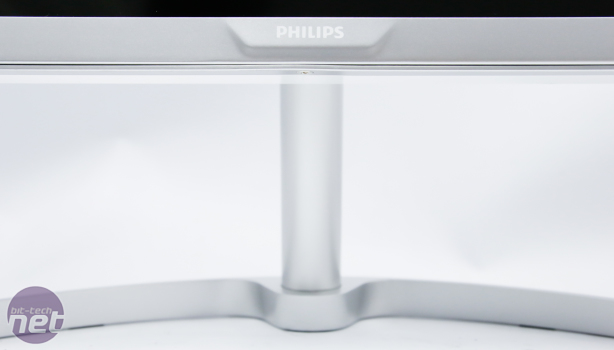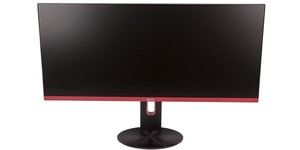
Performance Analysis
We don't look at too many VA panel monitors, especially those stretching to 40", so it was anyone's guess as to how it would perform. Viewing angles are claimed to be 178 degrees side to side, and we'd mostly agree with this, with little variation visible to the eyeball here both in terms of brightness and colour. We should point out just how sharp the screen is as well, which means that even if you boost the size of desktop objects, they're still extremely crisp.The colour gamut was excellent too. Philips claims support for 1.07 billion colours with this 10-bit panel, and our calibrator measured 100 percent of the sRGB gamut and 85 percent of the AdobeRGB colour space, which is one of the best results we've seen, although it's not to be taken as a true wide gamut display. The contrast was excellent too, topping the chart, and this was evident in performing basic tasks using the screen outside of the calibration software too.
Click to enlarge
Colour accuracy wasn't stellar out of the box, though, and the gamma curve leaves something to be desired. An average delta E of 3.83 was a mid-table result at best, although the maximum variation was actually quite good at just 5.46, which is the second lowest for this measurement so far. Colour uniformity was less impressive with both average and maximum variation sitting near the bottom of the graph. Brightness uniformity was also a mixed bag. The average variation was fairly low, but the maximum stood at 20 percent, which is four percent higher than the next highest result.
Click to enlarge
The maximum brightness we measured was 257cd/m2, and while this was fairly low, it was easily enough to offer a bright and vivid display, even in a well-lit room. None of the above are deal-breakers, but something we did spot was evidence of ghosting. This was evident using AMD's FreeSync demo, with the blades on the windmill being the sticking points, although this can be alleviated at least a bit by using Philips' Smart Response pixel overdrive via the OSD.
Once calibrated, the colour accuracy was greatly improved with the maximum delta E falling from 5.46 to 2.34 and the minimum from 1.63 to 0.31. The tone response was also much improved, especially above 20 percent brightness compared to the out-of-the-box settings.
Click to enlarge
Conclusion
With a reasonable price for such a huge screen, Philips has clearly had to make sacrifices elsewhere, and these come in average panel uniformity in terms of brightness and colour as well as a lack of adjustments and questionable build quality in a couple of areas. However, the contrast and colour gamut were excellent, and calibrated results were good too.The end result is a relatively solid product, although the need to alleviate ghosting using pixel overdrive and the lack of FreeSync or G-Sync support means that this isn't the best option for a premium gaming monitor. Indeed, for the same price, you can get something from Philips' own sister brand, AOC, such as the Agon AG271UG, which is a more manageable size for sitting a little closer to, plus you get G-Sync support and far more extensive adjustment than the Philips BDM4037UW; similar FreeSync-enabled screens, meanwhile, are cost even less.
Ultimately, if you're desperate for a 4K 40" screen with half decent image quality for a reasonable price, then the Philips BDM4037UW is good value. However, for professionals and gamers, the lack of adjustment, colour accuracy, brightness uniformity, and variable refresh rate likely make opting for a smaller, better-featured 4K monitor a logical choice if you have around £600 to spend.

MSI MPG Velox 100R Chassis Review
October 14 2021 | 15:04











Want to comment? Please log in.